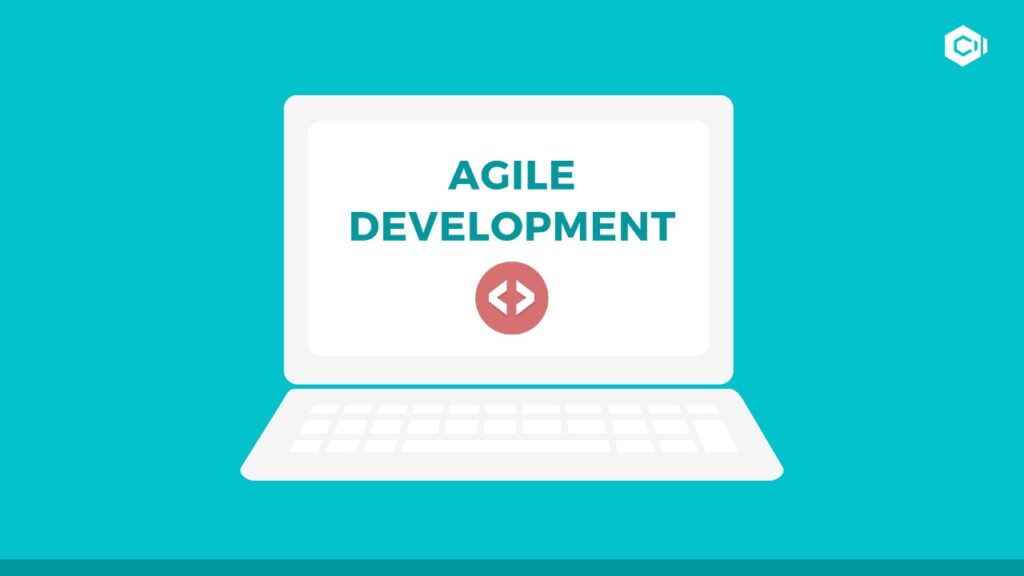Managing a project to achieve all the goals within the given constraints is not an easy task to do. You need a flexible and resilient mindset to manage any project efficiently.
Basically, you need agile thinking so that you can understand the environment that you’re in, be able to figure out any uncertainty you’re facing, and be able to adapt to that change as you go along.
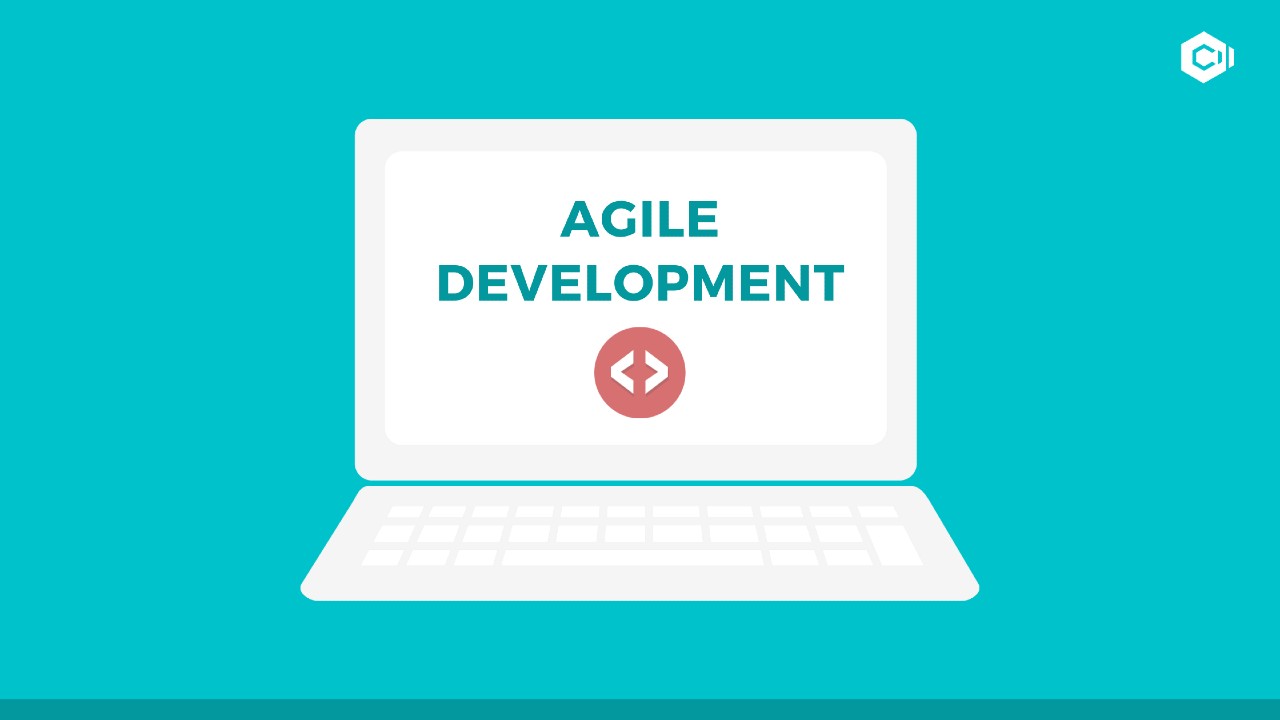
Agile is a massive movement for all industries including the software development industry across the globe. It enables enterprises to master change management. By adopting the agile culture, businesses can flourish in the current uncertain world.
Agile approaches in software development include requirements gathering, discovery, and solution improvement via cross-functional, self-organizing teams working together with their end-user or client.
Have a look at some of the surveys conducted by digital.ai related to Agile methodology.
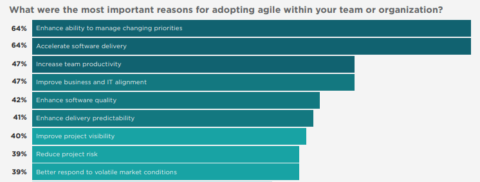
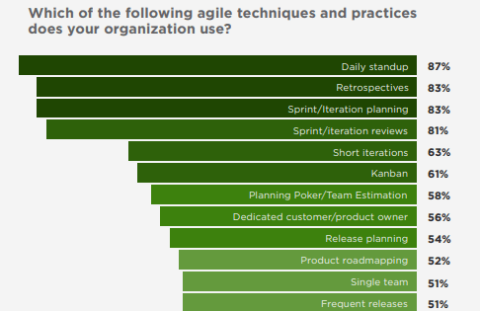
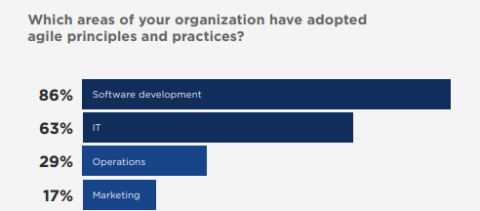
As per digital.ai report, there is a significant growth in Agile adoption within software development teams, increasing from 37% in 2020 to 84% in 2021.
In this article, we will discuss different agile development methodologies. But before that, let’s understand the term “Agile Manifesto” and its values & principles.
⭐What is the Agile Manifesto?
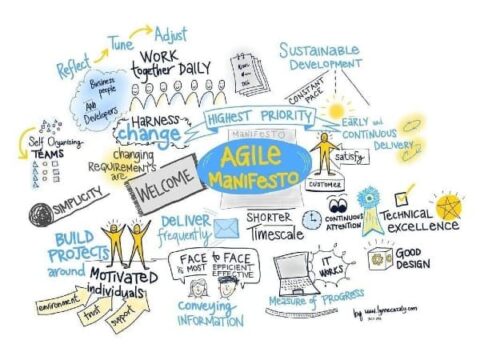
Image Credit: LynneCazaly
In 2001, during an outing at The Lodge at Snowbird ski resort in Utah, 17 software developers were discussing how to transform the traditional software development processes into a new development model. They identified that the traditional processes were clumsy, inflexible, unresponsive and too focused on documentation. Those developers called themselves the Agile Alliance.
The core ideals and tenets of agile software development are outlined in a document called the Agile Manifesto. Known formally as the Manifesto for Agile Software Development, the manual seeks to provide a practical framework that enables teams to embrace the principles of agile project management and use them to enhance their workflow.
They drafted a document called “Agile manifesto” for building a software product in a modern way. The Agile Manifesto is a proclamation that dictates 4 core values and 12 principles. Let’s understand the primary values and principles.
⭐ 4 Core Values of Agile Manifesto
1. Individuals and interactions over processes and tools
In this Agile manifesto value, proper interaction with the clients is given more importance than the processes and tools. In order to have a crystal-clear idea of the requirements of clients, team members should understand the needs and expectations of the clients.
2. Working product over comprehensive documentation
In the traditional methodologies, the primary focus used to be on comprehensive documentation. But in this Agile manifesto value, more focus is given on product delivery. The reason being, too much documentation works such as requirements, specifications, design documents, and many more, used to delay product delivery.
In Agile methodology, we create “User Stories”, that assist developers to initiate a task. “User stories” are to-do lists provided by the clients as per their priorities.
3. Customer collaboration over contract negotiation
In the traditional methodologies, the clients used to communicate with the development team before starting the development project (at the time of negotiation in requirements, and timelines).
Under this Agile manifesto value, the clients are engaged throughout the development process. The reason being, the development team delivers to them a part of the product every week (every time period). This allows the team to deeply understand the customer’s specifications and requirements and as a result, helps in deploying the fully functional and error-free complete product in time.
4. Responding to change over following a plan
In the past methodologies, any change in a project was considered an expense due to many reworks.
However, in this Agile value, a change in the project adds value.
In Agile methodology, the focus is on the iteration of product development. Any changes or introduction of new features can be shifted to the next iteration. This way, the development team can quickly adapt to a change and deliver a high-end product in time with complete customer satisfaction.
⭐ 12 Principles of the Agile Manifesto
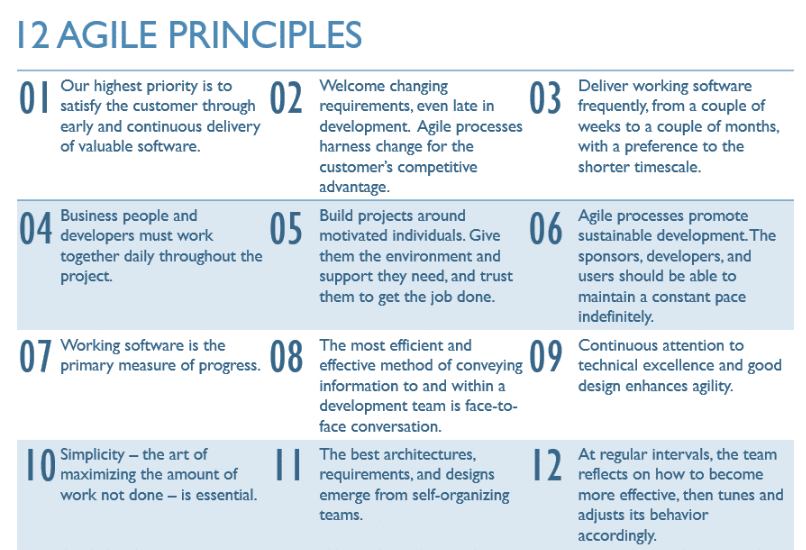
Source: Hive
⭐ So, what is Agile Software Development?
The Agile software development is an application development approach that is based on the values and principles proclaimed by the Agile Manifesto.
In Agile software development, the product is not delivered at once. Rather, a product goes through a number of iterations before the final one.
By embracing Agile software development principles, application developers perform short and regular iterations of development work called Sprints. One Sprint (say 2-4 weeks) includes analysis, design, coding, testing, and release. Software developers release a functional software module of the final product at the end of every Sprint. Thereafter, the client’s feedback is collected and is implemented in the next Sprint.
This way, a fully functional superior quality software product is built and delivered to the client with 100% customer satisfaction.
⭐Agile Software Development Methodologies
These aforementioned core values and principles assist software developers to deliver high-quality software products as per the client’s expectations within the scheduled timeline.
We will be discussing primary Agile development methodologies.
- Kanban
- Scrum
- Lean
- Extreme Programming (XP)
- Crystal
- Feature Driven Development (FDD)
- Dynamic Systems Development Method (DSDM)
1. Kanban
Before understanding the Kanban software development methodology, let’s know where Kanban Came from.
In the 1940s, a Japanese engineer named Taiichi Ohno in the Toyota car company coined the Kanban framework to manage Toyota’s factory floor. The Japanese term “Kan” means “Visual” and “Ban” means “Cards”. Later, Kanban was implemented in software development and DevOps to monitor the workflow using Kanban Board.
➤ What is the Kanban Board?
Kanban Board is a physical board or a software tool, allowing team members to track the state of development work at any time.
➤ Anatomy of a Kanban Board
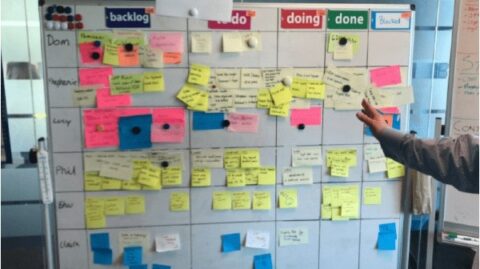
- Columns – Each column represents the progress status of the different stages of a development project. A Kanban Board consists of 3 basic columns- “To-Do”, “Doing”, “Done”.
- Visual Cards – The visual cards represent development tasks. Each card consists of information related to a task such as deadline, assignee, description, etc.
- WIP limit – It is a limit on the amount of development tasks being performed by a team member.
- Commitment Point – Tasks are generally kept in a backlog. The moment at which a team member pulls a task from the backlog to work on it.
- Delivery Point – The moment at which the final product is built and delivered to a customer.
➤ Core Principles of Kanban Methodology
The core principles of Kanban methodology are listed below:
✔ In Kanban methodology, the development team must start with the existing workflow.
✔ The team should know its capability and cap the WIP accordingly. Assigning more tasks to a developer than he(she) is comfortable to do it, will only impact the project negatively.
✔ Give respect to the current roles and responsibilities and allow the teams to work as a unit for figuring out and implementing any changes.
✔ Unlike traditional methodology, Kanban allows every individual in the team to make decisions related to the project. This methodology makes the team members ready for future leaders.
➤ Core Practices of Kanban Methodology
✔ Make a proper visualization of the workflow via a physical board or software tool.
✔ Put a limit on work-in-progress (WIP) in order to achieve maximum efficiency.
✔ Improve the workflow by monitoring work and resolving any bottlenecks.
✔ This practice makes sure that the team understands & follows the policies to make any improvements.
✔ Take feedback from the client and implement the changes needed.
➤ How Does Kanban Work?
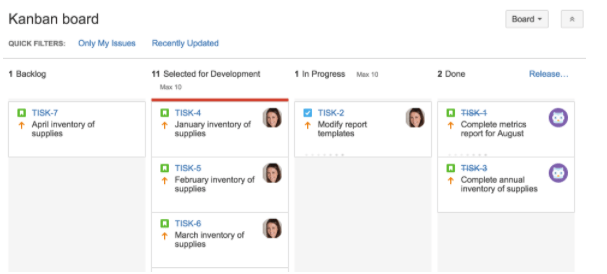
Image Source: Atlassian
- Initially, the client’s requirements are stored in the form of a Product Backlog. Thereafter, a Kanban Board is created.
- Then, the tasks are pulled from the backlog/stories and shifted to the “To-Do” column. And this moment is called the Commitment Point.
- After that, the team takes up the task from the “To-Do” list and starts working on it. This state is called “In-Progress”.
- During the “In-Progress” process, Work in Progress (WIP) limits makes sure that the work of the team is not piled up. Proper WIP limits ensure that the team is finishing old work, rather than initiating a new work.
- The moment an assigned task is finished, it is moved to the next column, “Done”.
2. Scrum
Scrum is one of the popular Agile development methodologies. It is based on an iterative and incremental process to offer value to the customers throughout the development of the project.
➤ Roles and Responsibilities in Scrum
- Scrum Master
- Product Owner
- Scrum Team
➤ Scrum Process Flow
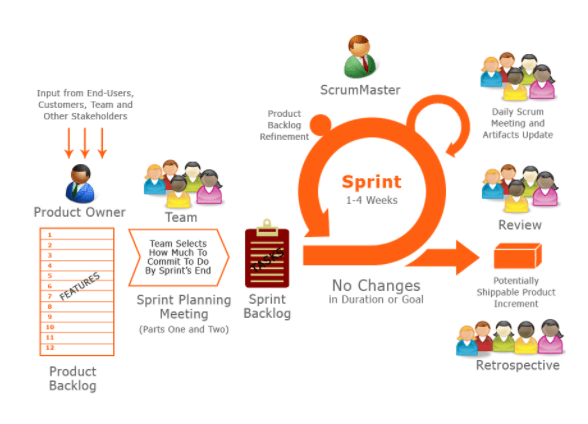
➤ Product Backlog
The Product owner talks with the client and gathers all the business requirements. A document related to features is created that is referred to as Product Backlog.
➤ Sprint Backlog
After that, in a meeting known as the “Sprint Planning”, the Product owner shares the Product Backlog with the Sprint team (Scrum Master, Developers, and testers). The whole Sprint team agrees to accomplish a certain list of user stories. This implementation of user stories in the current Sprint is known as the Sprint Backlog.
❗ Note: Once the team has finalized the Sprint backlog, they cannot alter it within the Sprint. However, if any modification is needed, it either shifts to the next sprint, or the current Sprint is cancelled.
For example, the development team decided to release a product in 3 iterations (in Scrum methodology, each iteration is called a “Sprint”).
- First Iteration– User stories 1 and 3 will release (Sprint 1)
- Second Iteration – User stories 2, 4 and 6 will release (Sprint 2)
- Third Iteration – User story 5 will release (Sprint 3)
➤ Daily Scrum
The Scrum Master organizes a daily standup meeting of 15 minutes time duration with the Sprint team to monitor the development progress. This meeting is called “Daily Scrum”.

➤ Key discussion in Daily Scrum:
- Which tasks have you completed since the last Daily Scrum?
- What will you work on until the next meeting?
- Any bottlenecks in your way?
➤ Sprint Review
At the end of each “Sprint”, Scrum Master conducts a meeting called the “Sprint Review” meeting. In this meeting, the Product owner reviews the product and verifies whether the product meets the client’s expectations or not.
The time duration of a Sprint review is a maximum of four hours.
➤ Sprint Retrospective
After the Sprint Review, a Sprint Retrospective meeting is organized to discuss “What went well during the Sprint” and “Where improvement is needed”.
Again, the next Sprint Planning Meeting begins.
3. Lean Software Development (LSD)
LSD got the Lean concept from the manufacturing industry to optimize production and assembly lines by reducing waste and maximizing customer value.
The Lean software development approach is also referred to as the Minimum Viable Product (MVP) strategy. In this approach, a team releases a basic version of its software product to the market, learns from customers about their likes and dislikes. And then iterates based on customers’ feedback.
➤ Principles of Lean Software Development
✔ Identifying and removing the waste (in “Lean terms” any non-value adding activities).
✔ Create a basic product and deliver it to the customers. Later, enhance the product incrementally as per customer feedback.
✔ All the learnings during a project should be well-documented for future projects.
✔ Quality is maintained throughout the SDLC. Every small iteration is followed by testing.
✔ Respect each team member by interacting proactively and effectively, managing conflict in a healthy way and encouraging each other to bring out the best work.
✔ Encourages team members to show responsibility by having their options open and continuously gathering information to make decisions.
✔ Optimize the whole product by focusing on an individual component of the product.
4. Extreme Programming (XP)

Extreme Programming is one of the Agile development methodologies implemented by various IT companies.
In the 90s, Ken Beck, a software engineer, introduced XP in order to develop superior quality software products quickly and also able to adapt to clients’ ever-changing business requirements. You can go through the book “Extreme Programming Explained: Embrace Change”.
➤ XP Process Flow
1. Planning – Here, a team collects the business requirements from the client in the form of user stories. Thereafter, the value of each user story is estimated. This helps the team to know how much time it would take to implement a story.
XP practices used:
- Planning Game
- On-Site Customer
2. Design – Here, a simple design of the product is created for fewer dependencies & early deliveries. Any add-on functionalities can be implemented later at some point.
If some user stories require more research work in terms of technicality, a short time-boxed period is assigned known as Spike.
XP practices used:
- Refactoring
- Simple Design
3. Coding – After the design phase, the development team writes the application code.
XP practices used:
- Pair programming
- Collective code ownership
- Coding Standards
4. Testing – After the coding phase, the product is tested first and then run after fixing the bugs.
XP practices used:
- Continuous integration
- Test first
- Iterative development
5. Release – Finally, the product is released & project velocity is calculated to keep a check on the progress.
➤ Leading Roles in XP Model
- Client
- Programmer or Developer
- Tester
- Manager
- Coach
5. Crystal
Alistair Cockburn, an American computer scientist, created Crystal for IBM in 1991. He defined Crystal agile development methodology as, “Crystal is a family of human-powered, adaptive, ultra-light, ‘stretch-to-fit’ software development methodologies”.
There are different Crystal development methodologies for different project types. And a project depends on the following below factors:
- Team Size
- Criticality
- Project Priority
Different colors represent different team sizes.
- Crystal Clear – up to 6 team members
- Crystal Yellow – up to 20 team members
- Crystal Orange – up to 40 team members
- Crystal Red – up to 80 team members
- Crystal Maroon – up to 200 team members
Different levels of criticality are listed below:
- Comfort
- Discretionary Money
- Essential Money
- Life
➤ Characteristics of Crystal methodology
- In Crystal, project members are the key entity and a project flow should adapt around them.
- The Crystal development methodologies have no fixed process or tools. Instead, the methodologies are stretched to fit the ever-changing business requirements of a project.
- The Crystal methodologies are ultra-light methodologies that focus on transparency & open communication. There is not too much documentation.
6. Feature Driven Development (FDD)
Jeff de Luca, the globally recognized software visionary, coined the FDD methodology in 1997 for a bank project in Singapore. Later, with the success of this project, the FDD model was embraced worldwide.
Feature-Driven Development is an Agile development methodology that follows the values and principles of the Agile Manifesto. FDD focuses on building working applications with features as per the client’s requirements. It is the best fit for big and long-term projects.
➤ FDD Model Flow
- Create an Overall Model –The client and development team draft an overall model. And this stage is guided by a Chief Architect.
- Prepare a List of Features – Make a list of features based on the client’s needs for implementation. Each feature of the application should complete within 2 weeks.
- Plan By Feature – The features will be assigned to different programmers.
- Design By Feature – A design package will be designed for each feature of the application, and development team members will perform a review before starting the feature development.
- Build By Feature – Developers write the code for a list of features and test the features to get approval.
➤ Leading Roles in FDD Model
There are 6 key roles in a FDD Agile methodology.
- Project manager
- Chief architect
- Development manager
- Chief programmer
- Class owner
- Domain expert
7. Dynamic Systems Development Method (DSDM)
The Dynamic Systems Development Method is an iterative approach in software development that is majorly based on the Rapid Application Development (RAD) methodology. It follows the 80-20 rule i.e., 80% of software deployment in 20% of the time.
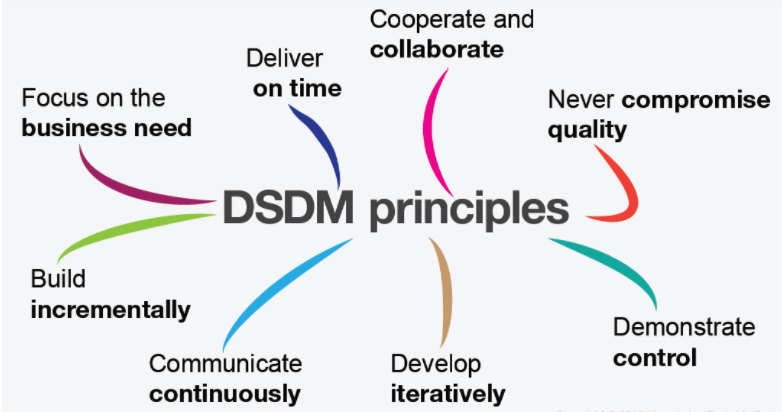 Image Source: Knowledge Train
Image Source: Knowledge Train
➤ DSDM Model Flow
Let’s understand the process flow in Dynamic Systems Development Method.
- Pre-Project – As the name suggests, it occurs before the starting of the actual project. In this phase, only project conceptualization happens.
Key objectives:
- Figure out the problem.
- Understand the project scope.
- Prepare a plan.
- Feasibility Study – In this phase, a team discusses whether the project is feasible to carry out.
Key objectives:
- To analyze different estimates of a given project such as costs involved, timelines, resources available, and many more.
- Look for the best approach to working.
- Business Study – The team performs study & research on the business aspect of the project such as which technology to incorporate, determining the workflow, and so on.
Key objectives:
- To determine high-level requirements.
- To identify solutions to the project.
- Evolutionary Development Phase – In this phase, prototype designing of different Functions of the system happens.
Key objectives:
- Build a functional prototype of the actual software product.
- Deployment Phase– Here, the product is designed & built incrementally and delivered after product documentation. Along with that, end-users are given training on how to use the software product. Thereafter, it gets approval.
Key objectives:
- Offer product documentation.
- Offer training to the end users.
- Assess whether the developed product matches the client’s requirements or not.
There are 3 sub-phases within the Deployment phase:
A) Assemble – Here, the team performs tasks required to put together all the product components.
B) Review – Here, the team will make sure that the component of the product is working fine and is approved to deploy. Along with that, the team will also perform a retrospective for the increment.
C) Deploy – Here, the team will release the component of the product so that it is ready to use by the client.
- Post-Project – It is a project maintenance phase where the technical support team addresses and fixes any glitches during the running of the software product.
Key objectives:
- Monitoring the deployed solution.
- Addressing the client’s feedback related to any changes.
What is a life cycle in Agile?
The systematic set of phases that a product goes through from start to finish is called the Agile software development life cycle. Concept, conception, iteration, release, maintenance, and retirement are its six stages.
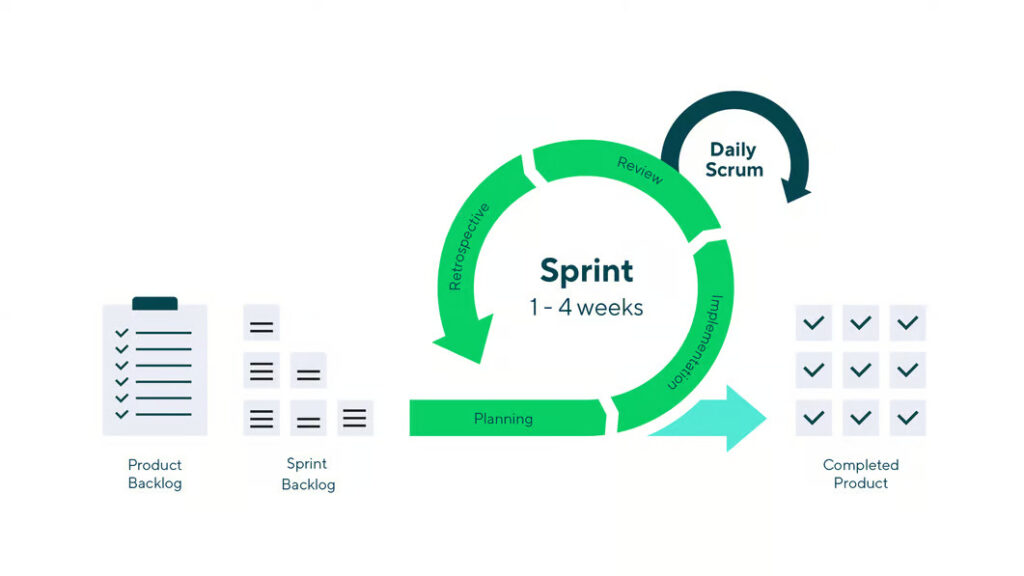
The Agile life cycle will change somewhat based on the project management approach a team decides on. Scrum teams, for instance, operate in brief intervals called sprints, which are comparable to iterations. Additionally, they have well-defined roles—like Scrum master. Kanban teams, on the other hand, operate more like continuous flows without roles that are necessary. Extreme Programming is another example, where teams prioritise engineering techniques and work in shorter iterations.
All software development teams, however, have the same objective in mind: providing consumers with functional products on schedule.
⭐ Benefits of Investing in Agile Software Development
Let’s discuss the compelling benefits of implementing the Agile approach on your next software development projects.
1. Project Transparency
Unlike a traditional development approach, the Agile approach allows involvement of software developers, business analyst, QAs, project manager and client throughout the software development project. The whole team works as a unit to complete the features assigned to a particular sprint.
The Agile team conducts daily standup meetings to keep everyone on the same page.
2. 100% Client Satisfaction
In the Agile approach, the client is kept in the loop and the development team makes changes as per the client’s feedback. This way, an Agile software development company provides value to the clients and delivers the final product exactly as per their needs and expectations.
3. Adaptable to Change
The Agile approach is quite flexible and manageable. This dynamic approach breaks down a project in short sprints to adapt to any changes in no time.
The moment any feedback comes from the client’s end, the agile development team makes a quick response to implement the change and release it in the next sprint to the client.
4. Minimizes Technical Debt
It is an implied cost of rework caused by picking a quick & temporary solution in software development in order to make faster time-to-market.
Unlike traditional development methodologies, Agile methodologies help to minimize technical debt.
The Agile team discusses the product backlog (such as defects, implementing any new feature or any maintenance task) before each sprint planning session, to figure out the issues that need to be addressed.
5. Better Project Control
In a traditional development model like the Waterfall model, only initial requirements were used to do the entire project planning. However, in the Agile development approach, a team needs to calculate budgets, deadlines, risks, and many more parameters for the planning and execution of a project.
Agile metrics are imperative for measuring the performance of a software development project at different stages of the software development life cycle (SDLC).
Some of the metrics are listed below:
- Velocity
- Sprint Burndown
- Epic and release burndown
- Lead Time
- Throughput
- Failed Deployments
6. Enhance Quality Product
By using the Agile model, a project is divided into small manageable units for making a high-quality product.
This development approach enables the team to figure out any expectation mismatches in the early stages of software development and fixes bugs quickly. The development team makes sure that each build is fully tested and working. In this way, you will get a high-quality final product.
7. Timely Delivery
In the Agile iterative approach, development and testing are performed parallelly. This assists the development team to reduce the Time-To-Delivery.
⭐ It’s Time to Switch to Agile
‘Delivering a quality product at Speed’ is the success mantra in today’s highly competitive digital era.
Agile is one of the buzzwords in the software development niche.
This approach has proved to be effective in assisting software development companies to deliver successful products within the scheduled timeline.
➤ Advantages of Agile mindset in a nutshell:
✅ Enhance ability to change management
✅ Accelerate time-to-market
✅ Multi-fold productivity
✅ Enhance delivery predictability
✅ Improve project visibility
✅ Minimize project risk
In the current volatile time, an agile mindset is pivotal to kickstart your software development project. So, follow the best practices of the Agile approach to build unmatched software products.

